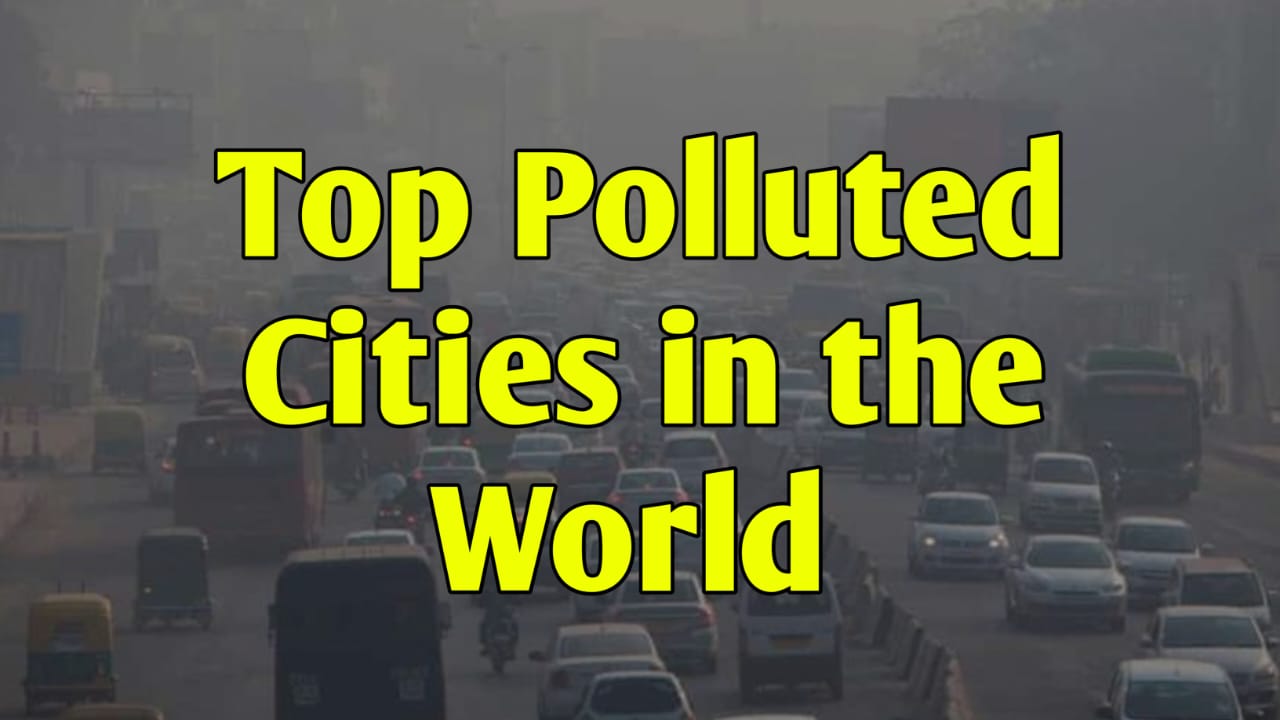The List of the World’s Most Polluted Cities
Pollution is a pressing global issue that affects millions of people around the world. In this blog post, we will delve into the list of the world’s most polluted cities, shedding light on the alarming levels of pollution that residents of these cities face on a daily basis. Understanding the severity of this problem is crucial for taking steps towards a cleaner and healthier future.

Dammam, Saudi Arabia:
Dammam, a bustling city on the eastern coast of Saudi Arabia, grapples with high pollution levels primarily due to industrial activities and vehicular emissions. The rapid urbanization and economic growth in the region have led to an increase in pollution, adversely affecting the health and well-being of its residents. Efforts to implement stricter environmental regulations are underway, but more needs to be done to combat this pressing issue.
Lahore, Pakistan:
Lahore, the heart of Pakistan, has gained notoriety for its dangerously high levels of air pollution. The city’s rapid population growth, coupled with insufficient waste management and an abundance of vehicles, has led to a hazardous environment for its inhabitants. The smog-filled skies serve as a stark reminder of the urgent need for comprehensive pollution control measures in Lahore.
Dhaka, Bangladesh:
Dhaka, the densely populated capital of Bangladesh, faces severe pollution challenges. Rapid urbanization, inadequate waste disposal systems, and an over-reliance on fossil fuels contribute to the city’s pollution woes. Dhaka’s residents, particularly the vulnerable populations, are at risk of health issues due to prolonged exposure to polluted air. Immediate action is imperative to reverse this alarming trend.
Delhi, India:
Delhi, the capital city of India, consistently ranks as one of the most polluted cities in the world. Vehicular emissions, industrial activities, and agricultural burning contribute to the city’s hazardous air quality. The citizens of Delhi endure the consequences of this pollution with adverse health effects, making it imperative for policymakers to implement stringent measures to combat air pollution.
Muzaffarnagar, India:
Muzaffarnagar, a city in the northern state of Uttar Pradesh, grapples with high levels of pollution, largely attributed to agricultural practices and industrial emissions. The burning of crop residues and inadequate waste management exacerbate the problem, posing significant health risks to its residents. It is crucial for the local authorities to implement sustainable practices and raise awareness about pollution control measures in Muzaffarnagar.
Conclusion:
The list of the world’s most polluted cities serves as a stark reminder of the urgent need for global cooperation and comprehensive measures to combat pollution. While these cities face unique challenges, the underlying message is clear: immediate action is necessary to safeguard the health and well-being of their residents. By adopting sustainable practices, enforcing stringent environmental regulations, and raising awareness, we can work towards a cleaner, healthier future for all.
Frequently asked questions
Q1: What criteria are used to determine the world’s most polluted cities?
A1: The ranking of the world’s most polluted cities is typically based on factors such as air quality, particulate matter concentration, and levels of pollutants like PM2.5 (fine particulate matter), PM10, nitrogen dioxide, and sulfur dioxide. Various organizations and environmental agencies compile data from monitoring stations to assess pollution levels.
Q2: Why is Dammam, Saudi Arabia, included in this list?
A2: Dammam, Saudi Arabia, is included due to elevated levels of pollution caused by industrial activities, as well as emissions from vehicles and other sources. The rapid urbanization and economic growth in the region have contributed to the pollution levels.
Q3: What are the main sources of pollution in Lahore, Pakistan?
A3: Lahore faces high pollution levels primarily due to factors like rapid urbanization, inadequate waste management, and a large number of vehicles on the roads. These factors contribute to poor air quality and health risks for its residents.
Q4: Why is Dhaka, Bangladesh, considered one of the most polluted cities?
A4: Dhaka, Bangladesh, is among the most polluted cities due to factors like rapid urbanization, inefficient waste disposal systems, and heavy reliance on fossil fuels. These elements contribute to the high levels of pollution in the city.
Q5: What are the specific challenges faced by Delhi, India, regarding pollution?
A5: Delhi, India, grapples with severe air pollution caused by a combination of factors including vehicular emissions, industrial activities, and agricultural burning. The city’s dense population exacerbates the issue, leading to adverse health effects for its residents.
Q6: What contributes to the pollution levels in Muzaffarnagar, India?
A6: Muzaffarnagar, India, faces pollution challenges primarily due to agricultural practices and industrial emissions. The burning of crop residues and inadequate waste management further elevate pollution levels, posing health risks to its residents.
Q7: What measures can be taken to combat pollution in these cities?
A7: Implementing stricter environmental regulations, promoting sustainable practices, investing in public transportation, and raising awareness about pollution control measures are crucial steps. Additionally, transitioning to cleaner energy sources and improving waste management can significantly contribute to reducing pollution levels.
Q8: How can individuals protect themselves from pollution in these cities?
A8: Individuals can take steps such as using air purifiers at home, wearing masks when outdoors, avoiding outdoor activities during high pollution days, and supporting initiatives that promote cleaner air and sustainable practices. Additionally, using public transportation or carpooling can help reduce personal emissions.
